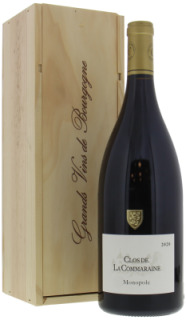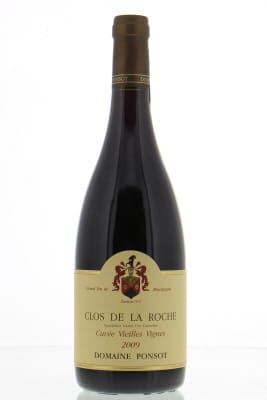Echezeaux 2008 Lucien Le Moine
| Classification | |
| Type | Rouge |
| Marque | Lucien Le Moine |
| Millésime | 2008 |
| Pays | France |
| Région | Burgundy, Cotes de Nuits |
| Raisin | Pinot Noir |
| Volume | |
| État | Parfait |
| Étiquette | Parfait |
| Consommable | -2036 |
| Stock | 0 |
Avis professionnels
Robert Parker (91)
The three barrels of Le Moine 2008 Echezeaux display smoked and roasted meats, red currant and cherry spiced with clove and cinnamon. (It's not hard to smell why Saouma calls this his -Cote Rotie of the vintage.-) There is a surprisingly doughy richness to the palate despite persistently tart-edged, bright red fruits, and a faintly lip-numbing combination of alcohol and tannin reinforces a sense of finishing flavor opacity. But this might pull itself more together by bottling. One can probably safely assume that it will remain fresh for more than a decade. In 2008, maintained Mounir Saouma, growers had to decide between two fundamentally different approaches: -Am I going to give in to fear because there is some rot, press gently; not macerate a lot; not keep a lot of lees; work with clean juice and plenty of sulfur? Or am I going to take another direction to counterbalance high acidity by macerating long, pressing deeply, putting a lot of lees in the wines, and aging a long time on those lees- and in his case without racking or adding sulfur. The barrels were topped not with wine but with stored lees, and Saouma gave me a chance to taste the richly-textured, fragrant quality of lees still retained after 18 months. Despite the fact that malo-lactic conversion is nearly always late in this cellar, the 2008s finished more or less on schedule, which here means by late summer or September. Alcohol levels, incidentally, generally finished just a bit over 13% in both vintages. The first, highly selective rackings of 2008s were due to take place soon after I tasted in March, with bottling anticipated between late spring and September of this year. -They're still slippery fish,- noted Saouma's partner, (and spouse) Rotem Brakir, this March of their evolving 2008s, and added: -We like to see the wines tasting every day well for two months before we bottle.- I last tasted most of the 2007s solely in June, 2009, and most of those prior to bottling. Of this vintage, Saouma, maintains it was important to pick Pinots in the first week of September and -not to exaggerate; to accept that, yes, there was a little bit of rot, and a portion of the fruit that was not entirely ripe; but to press deeply, to delay malo, and to keep a lot of lees in the barrel. Our 2007s were going through malo,- he notes, -when many growers were bottling theirs.- Talk may be cheap when it comes to the notion of wine -making itself,- acknowledges Rotem Brakir, but adds -2007 was a real lesson for us. Sometimes you have to sit and be quiet, while the wine educates you.- The results are unquestionably remarkable for their vintage. (The Le Moine wines - for more about whose sources and upbringing consult my reports in issue 171 - are rendered in such small quantities that I have generally indicated in my notes the number of barrels produced - each equivalent to approximately 25 cases. In each case where there I did not taste the bottled wine and are multiple barrels, I tasted a pre-assemblage.) The exceptional quality and promise of the Le Moine wines from two such challenging vintages is certainly a tribute to the unusual vinificatory approach chosen by Saouma and Brakir; to the caliber of the growers whose wines they select; and to at least some degree, I suspect, reflects the control they are able to exercise in collaboration with those growers, although Saouma down-plays such considerations, insisting that -if you find a grower you really like for a particular appellation, then you respect that grower's choice

















